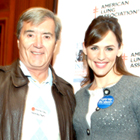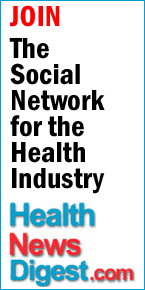 |
Research is yet to determine why a man’s prostate enlarges in a benign manner with age. And, we have yet to define a test to tell the difference between prostate cancers that needs urgent treatment and those that are so slow growing they may never need treatment. Herein lies the dilemma, so prevention may be the key to keeping this cancer in check.
Studies are lacking on a conclusive link between diet and prostate cancer, but there is growing evidence that certain foods can either prevent or slow down the spread of this disease. Men in the US and Sweden are at higher risk, while men in Japan, India and China have a lower risk. When populations adapt a more western diet risk increases.
A new book Eating for Prostate Care (Kyle Books, 2009) shows how foods can be protective? Foods rich in antioxidants prevent cell damage, reducing the overall risk for cancer. Foods that reduce inflammation reduce the risk for cancer. Healthy foods improve the immune system allowing it to destroy cancer cells before they multiply to a dangerous level. Foods can also alter gene expression turning on those that are protective.
The authors list specific foods that are being studied for their potential to lower prostate cancer risk: allium vegetables, cruciferous vegetables, fish, and foods rich in lycopene, phytoestrogens and polyphenols. They take these scientific sounding terms and turn them into actual foods to eat and how much.
Vegetables belonging to the allium family are garlic, onions, scallions, shallots, leeks and chives. The book suggests that you try to eat 3 cloves of garlic and 3 (3 ounce) servings of allium-rich foods a week. This group of foods reduces the growth of cancer cells and increases the death of existing cancer cells. They also reduce inflammation which lowers the risk for cancer, heart disease and stroke.
Cooking will destroy some of this beneficial effect so adding a sliced raw onion to a sandwich or salad is a healthy choice.
Cruciferous vegetables – broccoli, cauliflower, cabbage, Brussels sprouts, bok choy, arugula, watercress, kale, radish, turnip, horseradish and wasabi – are rich in sulphur-containing compounds that have anti-cancer properties. Some of these compounds are destroyed in cooking and can be lost in cooking water. The authors suggest at least 3 servings a week.
In places in the world where fish consumption is high, prostate cancer rates are lower. Fish rich in omega-3 fats – mackerel, salmon, trout, herring, sardines, tuna and anchovies -- are the most protective in both reducing the risk and slowing the growth of prostate cancer. Two to 4 servings (3 to 4 ounces each) are recommended weekly.
Beans, nut and seeds are all high in phytoestrogens. Fava beans, peanuts, and soy have the most but all foods in this group are good sources. Testosterone causes prostate cancer cells to grow. Phytoestrogens suppress growth. The authors suggest 3 to 4 servings of beans, nuts or seed a week, in addition to 3 to 4 servings of soy foods. They also suggest substituting some of your regular milk with soy milk.
Plants rich in polyphenols have been shown to slow human cancer growth. Green tea, pomegranate and raspberries are the richest sources but all fruits and vegetables are good sources, especially when eaten regularly. The authors suggest 5 to 6 cups of green tea a day. Those undergoing treatment for prostate cancer need to check with their doctors as this amount of green tea may interfere with certain medications. If that is the case, most can safely drink 2 to 3 cups of green tea a day.
Lycopene gives the rich red color to fruits and vegetables, particularly tomatoes which are also an excellent source of folate (a B vitamin), vitamins A, C, E, and the mineral potassium. Cooking helps to release lycopene from plant tissues so that tomato sauce and all cooked tomato products, even ketchup, are rich sources. A high intake of lycopene (eating any red foods) lowers the risk of developing prostate cancer. Lycopene also reduces inflammation and LDL (bad) cholesterol. Interestingly, lycopene found in foods has stronger anti-cancer properties than lycopene supplements. The authors recommend eating 2 or more servings of lycopene-rich foods weekly. If you are currently undergoing chemotherapy or radiation treatment for prostate cancer, lycopene-rich foods are beneficial but supplements may interfere with drug action, so check with your doctor.
Bottom line: Eat more garlic, onions, cabbage, cauliflower, broccoli, bok choy, wasabi, fish, beans, nuts, seeds, tomatoes, watermelon, and raspberries. And, drink more green tea and pomegranate juice. Eating these foods will improve your overall health and may lower your risk for prostate cancer.
For more information go to:
Eating for Prostate Care, by M. Rayman, K. Dilley, and K. Gibbons, Kyle Books, $16.95, 2009.
© NRH Nutrition Consultants, Inc.
Jo-Ann Heslin, MA, RD, CDN is a registered dietitian and the author of the nutrition counter series for Pocket Books with 12 current titles and sales in excess of 7 million books. The books are widely available at your local or on-line bookseller.
Current titles include:
The Complete Food Counter, 3rd ed., 2009
The Fat Counter, 7th ed., 2009
The Healthy Wholefoods Counter, 2008
The Cholesterol Counter, 7th Ed., 2008
The Diabetes Carbohydrate and Calorie Counter, 3rd Ed., 2007
The Calorie Counter, 4th Ed., 2007
For more information on Jo-Ann and her books, go to The Nutrition Experts
Subscribe to our FREE Ezine and be eligible for Health News, discounted products/services and coupons related to your Health. We publish 24/7.
HealthNewsDigest.com
We also create, produce and distribute tv/cable public service campaigns: HealthyTelevisionProductions









